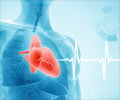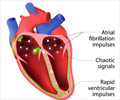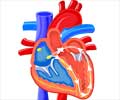Ventricular Arrhythmias
The ventricular arrhythmias originate in the lower chambers or ventricles of the heart and some of these can be life threatening.
- Premature Ventricular Contractions (PVC) is caused because of an abnormal discharge from the ventricles before the normal sinus electricity arrives. This causes the ventricles to contract sooner than a normal beat. This can results in a feeling of skipped beat or heart stopping for a second. PVCs are very common and occurs more commonly in adults than children. Heart attack, Hypoxia, low potassium levels in blood, caffeine, exercise, stress, alcohol, etc can trigger PVCs. It can also occur in healthy individuals. Infrequent PVCs are mostly unnoticed. Sometimes a strong and forceful heartbeat is noted somewhere in the chest or neck. Syncope or dizziness rarely occurs with these premature contractions. Frequent PVCs can cause diminished blood supply from the heart. Blood pressure can be low in such circumstances. When more than three premature ventricular contractions occur in a row, it is called as Ventricular Tachycardia. This is a more severe form of ventricular arrhythmias and requires instant treatment. Although many doctors say that PVCs do not cause life-threatening arrhythmias, they believe it indicates ongoing damage to the heart, severe heart diseases, low oxygen or potassium levels. Radiofrequency ablation [RFA] can be attempted to treat PVCs.
- Ventricular Tachycardia [VT] is rapid heart rate originating in the ventricles. It is life threatening can deteriorate to ventricular fibrillation and eventually lead to death. Heart rate can go upto 240 beats per minute. 2 out of 10,000 people have ventricular tachycardia. Nonsustained episodes lasts for a short time and end spontaneously. Patients with coronary artery disease, cardiomyopathy, valve disease, and Long QT syndrome are associated with this condition. Sometimes exercise or vagal stimulation initiates VT. In sustained ventricular tachycardia, the heart does not have nearly anytime to fill blood in the ventricles and its output is almost close to nothing. Intravenous anti-arrhythmic drugs such as lignocaine are used to terminate ventricular tachycardia and preventing its progress to ventricular fibrillation. In patients with unstable hemodynamics, defibrillation with defibrillator is attempted. Long-term antiarrhythmic drugs are needed for patients with VT. Implantable cardioverter defibrillator [ICD] can be implanted in patients along with pacemakers to prevent sudden cardiac death.
- Ventricular Fibrillation [VF] is the unsynchronized beating of the ventricles due to a disorder in the electrical activity. There is no proper pumping of blood and cardiac output is almost nothing. This is a fatal rhythm. It can cause shock and cardiac death. Antiarrhythmic medications may help, but takes time to act. Direct current from a defibrillator is the only means to bring the rhythm back to normal immediately. Cardiopulmonary resuscitation or CPR can be administered if the patient is at home and until the defibrillator arrives. Early defibrillation is best and the most advisable method to resuscitate and to ensure timely return of blood supply to the vital organs. Patients with increased risk of ventricular fibrillation are advised to have an ICD implanted.























